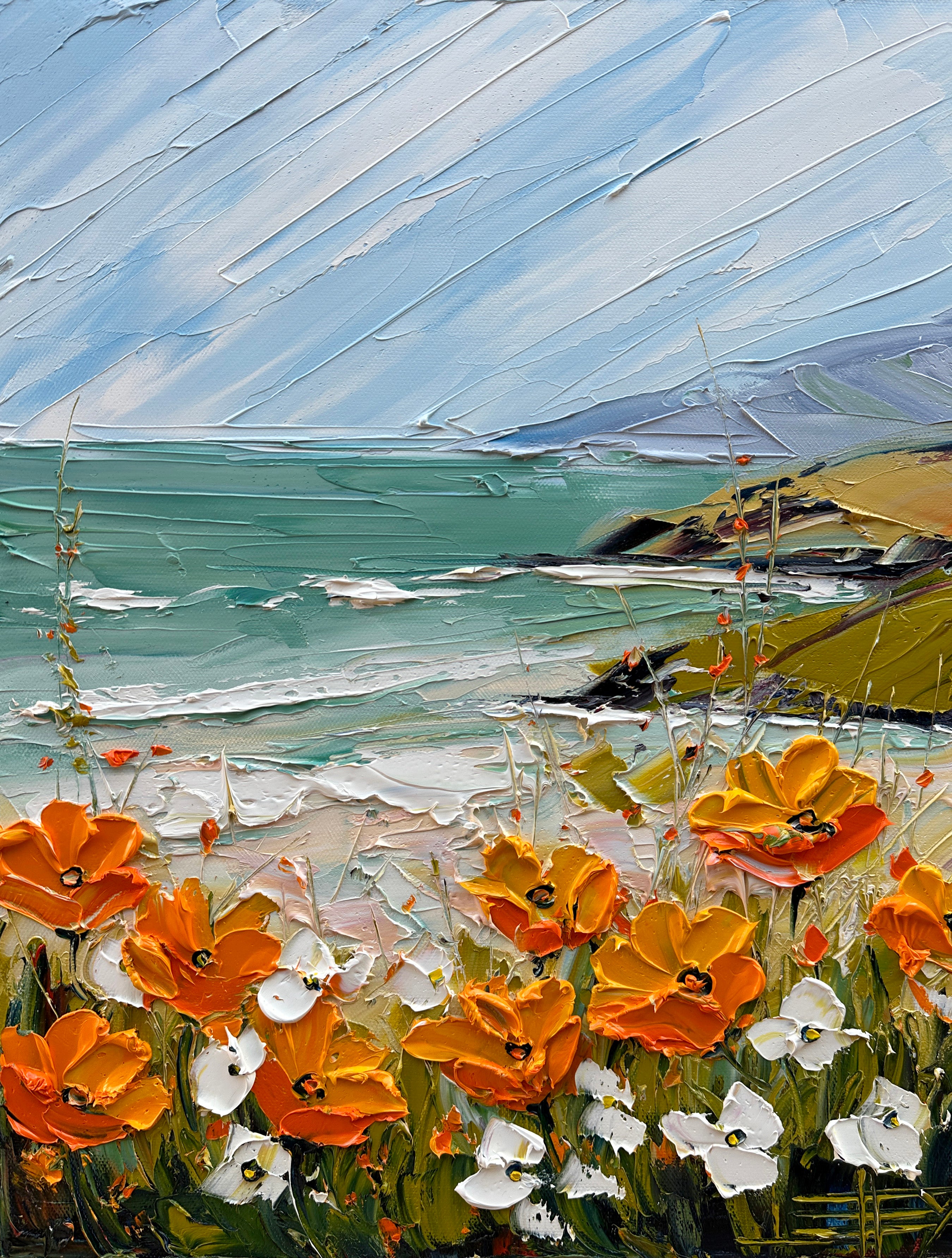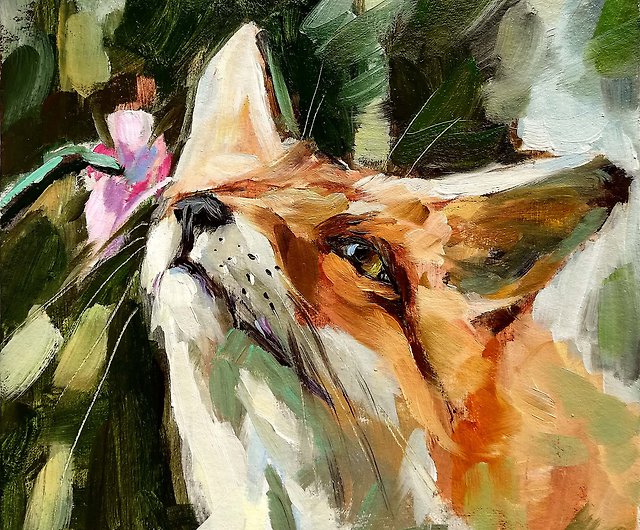Colorful Landscape and Nature Oil Paintings for Sale
Colorful Landscape and Nature Oil Paintings for Sale
Blog Article
Exploring Everything About Oil Paintings: An Overview to Comprehending Their Charm and Value
Oil paints have captivated target markets for centuries, supplying a look right into the creative proficiency of different ages. Their abundant history is linked with cutting-edge techniques and profound emotional expression. Recognizing the products and approaches behind these artworks can enhance gratitude. Additionally, the marketplace for oil paintings offers opportunities for investors and collectors alike. As one explores this remarkable world, the concern occurs: what makes an oil painting genuinely beneficial?
The Background of Oil Painting: A Trip With Time
Oil paint has origins that date back to ancient times, it truly prospered during the Renaissance, when artists uncovered its adaptability and rich shade possibility. Early instances can be mapped to the 7th century, with strategies evolving notably across societies. The medium came to be prominent in Northern Europe in the 15th century, specifically through the jobs of artists like Jan van Eyck, who pioneered its usage for comprehensive realism and dynamic shades. This period noted a separation from tempera paints, permitting better deepness and appearance. As oil paint spread, it influenced numerous musicians, causing work of arts by distinguished figures such as Leonardo da Vinci and Rembrandt. The medium's heritage continues, shaping the art globe well right into contemporary times.
Recognizing Oil Paints: Materials and Techniques
As artists check out the world of oil paints, they run into a diverse variety of materials and methods that specify this medium. The main elements of oil paint consist of pigments, which provide shade, and drying out oils, such as linseed, that bind the pigments and assist in application. Different additives can change the paint's appearance and drying time, boosting convenience. Strategies like glazing, where clear layers are accumulated, and impasto, which involves applying thick paint, permit various aesthetic impacts. In addition, making use of brushes, scheme knives, and even fingers can produce special textures and surfaces. Comprehending these methods and materials enables musicians to totally express their creative thinking and achieve the preferred effect in their art work.
The Duty of Color in Oil Paints
Color plays an essential duty in oil paintings, influencing both visual charm and emotional vibration. Recognizing color concept fundamentals, including the connections in between colors, can boost an artist's capacity to share state of mind and atmosphere. Furthermore, grasping color blending methods enables greater deepness and richness in a painting's scheme.

Shade Theory Essential
Comprehending color theory is important for musicians dealing with oil paints, as it develops the structure for producing visually appealing and harmonious structures. Shade concept includes the study of just how shades interact, the shade wheel, and the relationships in between main, secondary, and tertiary shades. Artists make use of complementary shades to boost contrasts and develop focal points, while comparable shades advertise unity and cohesiveness within an item. In addition, the principles of warm and cool shades affect the perception of deepness and room in a painting. Comprehending these concepts allows artists to manipulate color effectively, assisting the viewer's eye and connecting their designated message. Mastery of color concept ultimately enhances an artist's capability to share feelings and concepts via their work.
Emotional Influence of Color
The psychological effect of shade in oil paintings plays an essential role in exactly how audiences view and connect with art work. Colors evoke details sensations and moods, influencing the visitor's mood. Cozy hues like oranges and reds can produce a sense of warmth and energy, while amazing tones such as blues and greens often evoke calmness or introspection. Artists purposefully pick color combinations to enhance narrative elements, guiding the audience's emotional trip. The saturation and comparison of shades additionally enhance these results, drawing attention and developing focus. Eventually, the interaction of colors in oil paintings not only boosts their visual appeal but likewise offers as a powerful medium for emotional expression, enriching the viewer's experience and analysis.
Color Mixing Techniques
While many elements of oil painting add to the overall composition, grasping shade blending methods is essential for accomplishing wanted effects and deepness. Color blending can be approached via various methods, including the subtractive and additive processes. Additive mixing includes integrating colors of light, while subtractive mixing relies upon pigments, where colors mix to create brand-new tones. Artists frequently use a limited combination to produce harmonious jobs, recognizing the relationships between primary, second, and tertiary shades. Methods such as glazing and scumbling better boost deepness and brightness. By masterfully blending shades, an artist can evoke emotions, produce centerpieces, and achieve a feeling of realism, inevitably raising the paint's visual and psychological impact.
Famous Oil Painters and Their Iconic Functions

Famous for their proficiency of color and strategy, oil painters have actually developed some of one of the most celebrated art work in history. Renowned artists like Vincent van Gogh astounded audiences with his emotive brushwork in "Starry Evening," while Claude Monet's "Perception, Sunup" prepared for Impressionism. Leonardo da Vinci's "Mona Lisa" stays an enduring symbol of artistic brilliant, showcasing his skill in catching human expression. Rembrandt's "The Night Watch" illustrates his innovative usage of light and darkness. Other notable numbers consist of Pablo Picasso, that revolutionized modern art with his bold testing in jobs like "Les Demoiselles d'Avignon," and Georgia O'Keeffe, whose vibrant depictions of blossoms and landscapes assisted define American modernism. Each musician's one-of-a-kind design contributed substantially to the oil paint landscape.
Just how to Evaluate the Quality of an Oil Paint
Evaluating the quality of an oil paint involves a cautious assessment of workmanship methods, as well as an analysis of color and composition. Observing brushwork, layering, and the application of paint can expose the artist's ability level. In addition, the interplay of shades and the total setup of components contribute significantly to the painting's visual value.
Examining Craftsmanship Strategies
A thorough assessment of workmanship strategies is essential for determining the quality of an oil paint. Critics ought to initially take a look at the application of paint; thick, textured brushstrokes may suggest a proficient hand, while excessively uniform applications can suggest a lack of deepness. oil paintings for sale. The layering method is additionally important; the presence of lusters and varied density can enhance luminosity and intricacy. Furthermore, the quality of the products utilized, such as the canvas and pigments, plays a substantial role in durability and total aesthetic. Focus to detail in components like sides and shifts in between shades mirrors the musician's dedication to their craft. Ultimately, these strategies add to the painting's psychological impact and market price, functioning as indications of the artist's ability and intent
Analyzing Color and Structure
While reviewing the high quality of an oil paint, one need to concentrate on the interplay of shade and composition, as these aspects are fundamental to the art work's overall effect. Color options can develop and evoke feelings state of mind; consequently, the artist's palette must be examined for consistency and comparison. A healthy structure directs the audience's eye and produces a sense of unity. Artists commonly use strategies like the regulation of thirds or leading lines to boost aesthetic passion. Furthermore, the use of light and shadow can add deepness, boosting the three-dimensionality of the paint. Inevitably, an effective oil painting marries color and composition, involving the visitor and welcoming a deeper gratitude of the artist's vision and strategy.
Taking care of and Preserving Oil Paintings
Appropriate care and preservation of oil paints is crucial for keeping their stability and durability. To protect these art work, it is essential to present them far from direct sunshine, which can trigger fading and discoloration. Maintaining a secure atmosphere with controlled temperature level and moisture further help in protecting against damages. Cleaning up should be done delicately utilizing a soft, dry towel, preventing any rough chemicals that could harm the paint or varnish. Normal examinations for indicators of damage, such as flaking or cracking, are advisable. When saving or delivering oil paints, proper padding and framework are needed to prevent physical harm. Inevitably, attentive care contributes to the aesthetic charm and value of oil paints gradually.
The Market for Oil Paints: Accumulating and Investing
Understanding the marketplace characteristics for oil paintings is necessary for collection agencies and investors alike. The worth of these artworks is affected by various elements, consisting of the artist's reputation, historic importance, and existing patterns. Enthusiasts commonly seek items that resonate directly while taking into consideration potential recognition in worth. Galleries and public auctions work as key locations for trading, with prices varying based on need and rarity. Buying oil paints calls for research into the market, in addition to an understanding of authenticity and provenance. Furthermore, arising musicians might use possibilities for substantial returns, while developed names can regulate high rates. Overall, a tactical technique to collecting can yield both aesthetic pleasure and financial rewards.

Regularly Asked Questions
What Are the Environmental Effects of Oil Painting Products?
The ecological influences of oil painting products consist of the release of unpredictable organic substances (VOCs), damaging waste generation, and resource extraction for pigments. These aspects add to air pollution and ecological degradation, raising issues among ecologically mindful musicians and customers.
Just How Do Various Canvases Influence Oil Paint Outcomes?
Various canvases affect oil painting results significantly. Surface area, absorbency, read more and appearance top quality can modify paint application, drying out times, and shade vibrancy. Artists typically select particular canvases to achieve desired results and boost their imaginative expression.
Can Oil Paintings Be Restored if Damaged?
If damaged, Oil paintings can indeed be recovered. Expert conservators use various strategies to fix tears, tidy surface areas, and address discoloration, making sure that the artwork retains its initial appeal and value for future generations.
What Are the Indicators of an Original Oil Painting?
The indications of an original oil painting include visible brush strokes, structure variations, and an unequal canvas weave (oil paintings for sale). Furthermore, credibility may be verified with provenance, trademarks, and the existence of a varnish layer special to oil tools
Just How Has Modern Technology Influenced Modern Oil Paint Techniques?
Modern technology has actually substantially affected modern-day oil paint strategies by presenting electronic devices for preparation, improved materials for structure and longevity, and online platforms for sharing and selling art, therefore increasing musicians' innovative possibilities and audience get to. Oil paint has roots that date back to ancient times, it truly flourished throughout the Renaissance, when musicians found its flexibility and rich shade capacity. The emotional impact of shade in oil paints plays a vital function in how visitors connect and view with art work. While several aspects of oil painting contribute to the overall make-up, grasping color blending methods is vital for achieving wanted impacts and depth. Reviewing the high quality of an oil painting includes a careful analysis of craftsmanship strategies, as well as an analysis of shade and structure. While evaluating the top quality of an oil paint, one should concentrate on the interaction of shade and composition, as these aspects are essential to the art work's overall effect.
Report this page